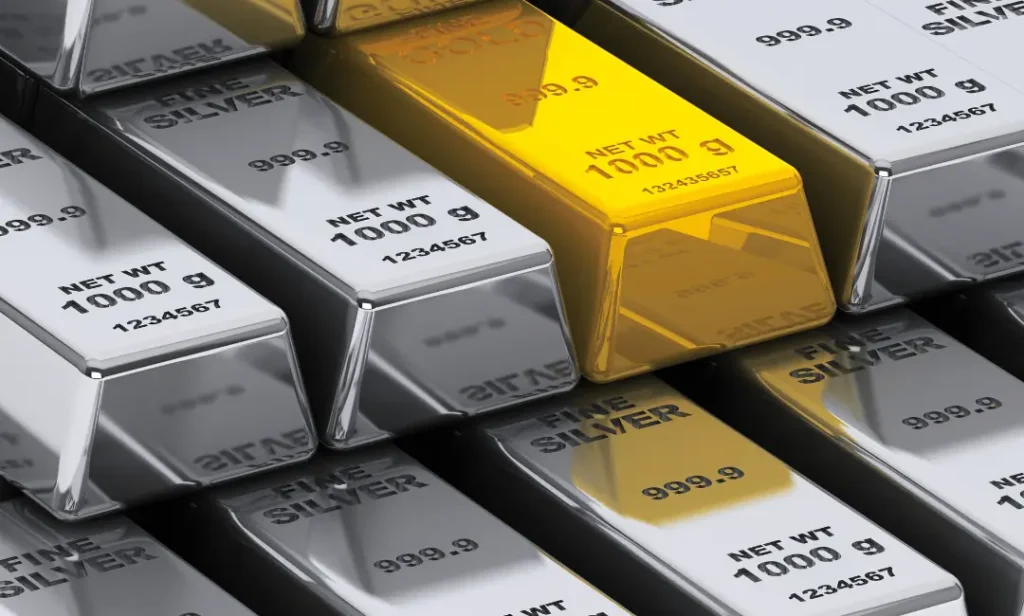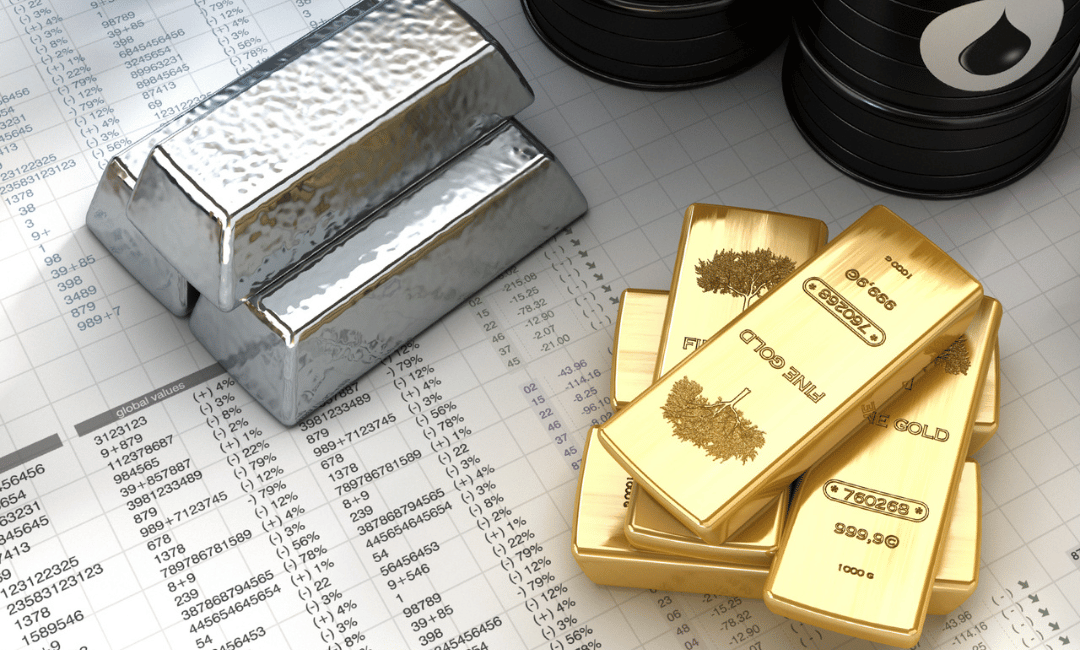
Gold and Silver Premiums: What You Need to Know
So, you’ve decided to dip your toes into the world of gold and silver investing. Congratulations! You’re about to embark on a journey that has captivated the imaginations and wallets of people for centuries. But before you start dreaming of treasure chests and pirate ships, there’s something you need to understand—premiums.
No, we’re not talking about that extra charge on your streaming service. We’re diving into the nitty-gritty of what makes up the actual cost of that shiny gold bar or silver coin you’re eyeing.
You see, the price tag on precious metals isn’t as straightforward as you might think. It’s not just about the market value; there’s an additional cost known as the “premium,” and it can make or break your investment strategy.
From understanding why premiums exist to knowing where to find the best deals, this guide will arm you with the knowledge you need to navigate the sparkling waters of gold and silver investing.
Ready to become a savvy investor? Let’s dig in!
The Basics: What Are Gold and Silver Premiums?
Let’s start by breaking down the jargon. When we talk about “premiums” in the context of gold and silver, we’re not referring to a fancy label or a special edition of these metals. Instead, the term “premium” refers to the additional cost you pay over the spot price of gold or silver when you make a purchase. The spot price is the current market value of the metal, usually quoted per ounce. The premium is the markup that dealers add to cover their costs and make a profit.
Why should you care about premiums? Well, if you’re investing in precious metals, understanding the premium can help you make smarter investment decisions. For instance, a high premium might indicate a strong demand for the metal, or it could be a sign that the dealer is charging more than they should. Either way, knowing how premiums work can give you an edge in the market. And let’s be honest, who doesn’t want an edge when it comes to investing?
The Factors That Influence Premiums
- Dealer’s Overhead Costs: Premiums aren’t arbitrary numbers. One of the primary factors that influence the premium is the dealer’s overhead costs. This includes rent, utilities, and employee salaries. These operational expenses are inevitably passed on to you, the consumer.
- Minting Costs: If you’re purchasing a newly minted coin or bar, the costs of production are also a factor. This includes the cost of labor, materials, and technology used in the minting process. These costs are baked into the premium, affecting the final price you pay.
- Investor Demand: The level of investor demand at the time of your purchase can also influence the premium. High demand can drive premiums up, while low demand can have the opposite effect.
- Understanding the Components: Being aware of these factors can help you evaluate whether a premium is fair or inflated, guiding you to make more informed decisions.
Why Premiums Vary Between Gold and Silver
- Market Size: One reason for the variation in premiums between gold and silver is the size and liquidity of their respective markets. Generally, the gold market is larger and more liquid, often resulting in lower premiums.
- Unit Size: Gold is usually sold in larger units like one-ounce bars or coins, whereas silver is often available in smaller units. The smaller the unit, the higher the premium, primarily because the production costs don’t differ significantly between gold and silver.
- Premium as a Percentage: Because silver is generally cheaper than gold, the premium, when considered as a percentage of the total cost, tends to be higher for silver.
Tips for Navigating Premiums

- Shop Around: One of the most practical tips for navigating premiums is to shop around. Premiums can vary significantly between dealers, so it’s wise to compare prices from multiple sources. Websites that aggregate prices can be a useful starting point.
- Buy in Bulk: Another tip is to consider buying in bulk. Dealers often offer lower premiums for larger purchases because the overhead costs per unit are reduced.
- Portfolio Diversification: While buying in bulk may offer a lower premium, it’s crucial to ensure that you’re comfortable with the size of the investment and that your portfolio is diversified. Putting all your investment into a single asset is rarely advisable, even if that asset is a precious metal like gold or silver.
Which Items Have Higher Silver and Gold Premiums?
When it comes to investing in gold and silver, not all items are created equal. Some forms of these precious metals carry higher premiums than others, and it’s crucial to know the difference. For instance, collectible coins, often referred to as numismatic coins, usually have much higher premiums than bullion coins or bars.
Why? Because their value isn’t just tied to the weight and purity of the metal; it’s also influenced by factors like historical significance, rarity, and even aesthetic appeal. These coins are often sought after by collectors, not just investors looking for a hedge against inflation.
Size Matters: Small vs. Large Units
Similarly, smaller bars and coins tend to have higher premiums compared to larger ones. As mentioned earlier, the cost of producing a one-ounce silver coin isn’t vastly different from producing a one-ounce gold coin. However, if you’re buying a smaller quantity, the premium as a percentage of the total cost will be higher.
This is why many investors who are looking to invest significant amounts often opt for larger bars or coins. The premium per ounce decreases as the size of the item increases, offering a more cost-effective way to invest in these metals.
The Brand Tax: Renowned Mints and Manufacturers
Another category that often carries higher premiums is branded bullion from well-known mints or manufacturers. Think of it as the “brand tax” you pay for the assurance of quality and authenticity.
For example, a gold bar from a renowned mint like the Royal Canadian Mint or the Perth Mint will likely have a higher premium than a similar bar from a less-known mint. The same goes for silver items. The reputation of the mint often adds an extra layer of security and trust, but it comes at a price.
Are Premiums Just Profit for the Dealer?
The notion that premiums are just a way for dealers to make a quick buck is a common misconception. While it’s true that premiums contribute to a dealer’s revenue, there’s more to the story. Let’s delve into the various aspects that make up the premium you pay, breaking it down into further sub-headings for clarity.
Overhead Costs
As mentioned earlier, dealers have overhead costs that they need to cover to keep their business running. This includes rent for the physical location, utilities, employee salaries, and other operational expenses. These costs are a significant portion to pay premiums. It’s not just about making a profit; it’s about covering the basic costs of doing business.
Minting and Production Costs
If you’re buying newly minted physical coins or silver bars, the cost of production is factored into the premium. This includes the cost of materials, labor, and the technology used in the minting process. These costs are incurred before the product even reaches the dealer, who then has to mark up the price to cover these expenses.
Market Conditions and Demand
Premiums aren’t static; they fluctuate based on market conditions and demand. During times of high demand, premiums can skyrocket. This isn’t necessarily the dealer taking advantage of a hot market but rather a reflection of the basic economic principle of supply and demand. When demand outstrips supply, prices go up. Conversely, in a market flooded with supply and low demand, premiums may decrease.
Risk and Uncertainty
Dealers also face risks that they need to mitigate, such as market volatility and the risk of theft. These risks contribute to the premium as a form of insurance. For example, if a dealer is holding a large inventory and the market price suddenly drops, they stand to lose a significant amount of money. The premium helps offset this risk.
Profit Margin
Yes, dealers do aim to make a profit—that’s the nature of any business. However, the profit margin in precious metals is often relatively thin, especially when dealing with bullion products. The competition is fierce, and consumers are increasingly savvy, often shopping around for the best rates. This keeps profit margins in check.
Wrapping It Up: The Takeaway
Understanding gold and silver premiums is crucial for anyone looking to invest in these precious metals. While the concept might seem complicated at first, it’s actually pretty straightforward once you get the hang of it. Premiums are influenced by a variety of factors, including dealer overhead, minting costs, and market demand. By being aware of these factors and doing your due diligence, you can make more informed investment decisions.
So, the next time you’re eyeing that shiny gold bar or silver coin, take a moment to consider the premium. It might just be the key to unlocking smarter, more profitable investment choices.
FAQs on Gold and Silver Premiums
Are premiums higher on gold or silver?
Premiums can vary widely based on a range of factors, but generally speaking, premiums are often higher on silver than on gold. This is primarily due to the unit size and the overall market size. Gold is usually sold in larger units and has a more liquid market, which often results in lower premiums.
On the other hand, silver is often sold in smaller units, and the cost of producing a silver coin isn’t vastly different from a gold coin. Therefore, the premium as a percentage of the total cost is usually higher for silver.
What is a reasonable premium for silver?
A “reasonable” premium for silver can vary depending on market conditions, the type of product you’re buying, and where you’re buying it from. However, as a general guideline, a premium of 15-20% over the spot prices are often considered reasonable for silver bullion coin.
For bars, the premium might be slightly lower, around 10-15%. Keep in mind that these are just general figures; premiums can fluctuate based on supply and demand, among other factors.
Why are silver premiums so high in 2023?
The high premiums on silver in 2023 could be due to a variety of factors, including increased investor demand, market volatility, or even geopolitical tensions that often make precious metals a “safe haven” investment.
Moreover, supply chain disruptions could contribute to higher premiums. It’s essential to stay updated on current market conditions and trends to understand the specific reasons for high bullion premiums in any given year.
What are premiums when to buy physical gold?
When buying gold, the premium is the additional cost over the spot price of the metal. The spot price is the current market price value, usually quoted per ounce. The premium covers various costs such as the dealer’s overhead, minting costs for new government issued bullion coins or bars, and any markup for profit.
Premiums can vary based on the type of physical gold product you’re buying physical bullion, coins, or numismatic coins—as well as the dealer’s pricing strategy and current market conditions.


